KWT300
The KWT300, a medium-sized wind turbine manufactured in Japan, is adapted to harsh weather conditions, such as remote islands and mountainous regions, where large turbines may not be suitable, serving as a community-type wind turbine to provide renewable energy to local regions.
 Typhoon and turbulence resistantCorresponds to Japan's unique wind conditions
Typhoon and turbulence resistantCorresponds to Japan's unique wind conditions
The normal climate version is designed to withstand wind speeds of 70 m/s. The typhoon climate version is able to withstand wind speeds exceeding 90 m/s and designed considering the maximum value of turbulence intensity in accordance with international standards enabling it to respond to unstable winds in mountainous regions.
Basic Parameters for WTGS (Wind Turbine Generator System) Classes
| IEC/JIS Wind Turbine Class | Ⅰ | Ⅱ | Ⅲ | |
|---|---|---|---|---|
| Reference wind speed Vref(m/s) | 50 | 42.5 | 37.5 | |
| Average wind speed Vave(m/s) | 10 | 8.5 | 7.5 | |
| Turbulence intensity(lref) | A+ | 0.18 | ||
| A | 0.16 | |||
| B | 0.14 | |||
| C | 0.12 | |||
| KWT300(ⅡA+) | KWT300 Typhoon Specification (S) |
|---|---|
| 50 | 58.5 |
| 8.5 | |
| 0.18Highest standard parameter | |
Design conditions for wind turbine Class from I to III are set based on the wind conditions at the installation locations within International design standards for wind turbines (IEC/JIS). The KWT300 is designed as a Class S wind turbine, aligning with the specific wind conditions in Japan, which is characterized by the influence of typhoons and gusts of wind. It is designed based on average wind speed of Class II, the reference wind speed of Class I, and applying the turbulence intensity parameter of the highest standard value.

 Grid-friendlySmooth connection to power grid with full converter control
Grid-friendlySmooth connection to power grid with full converter control
Being in a compact-scale of a 300kW output range, the wind turbine does not require big-capacity transmission lines or large-scale batteries. By controlling the output of a wind turbine or combining it with an output stabilization system, it can effectively be used in a distributed power system. Variable speed operation is achieved by an induction generator and AC-DC-AC link system converter. Additionally, the system is highly credible due to integration of the torque control and pitch control to provide a highly reliable system with low output fluctuations.

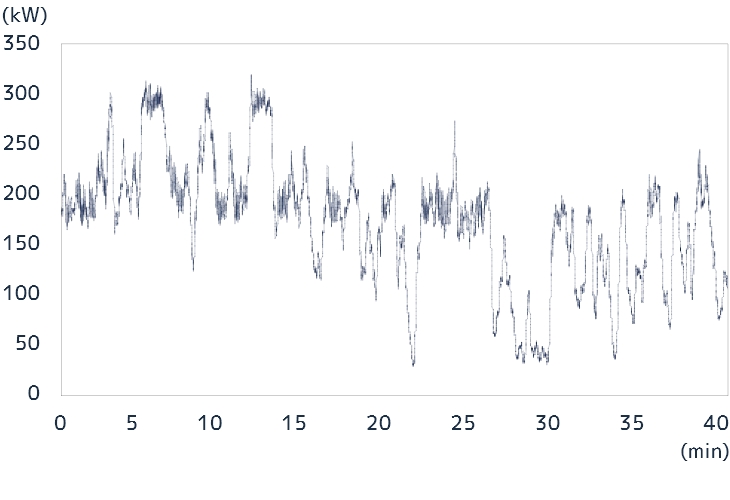
Wind turbine output before stabilization
Output stabilization simulation
 No big heavy equipment
No big heavy equipment
Easy to transport, easy to install
Compact design of wind turbine components allows most of them to be transported by truck. For remote sites where heavy lift cranes are not available, our unique system enables installation using a 60-ton crane.
-
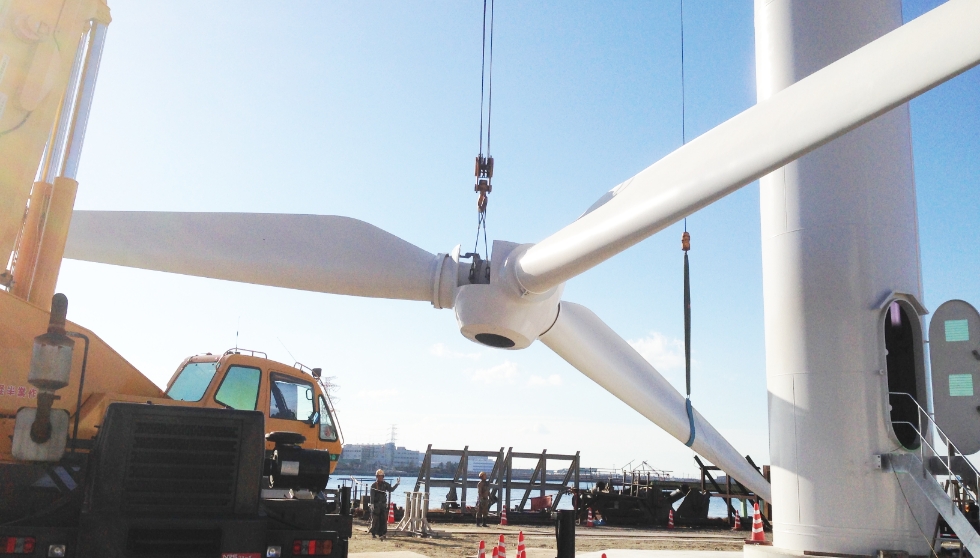
-
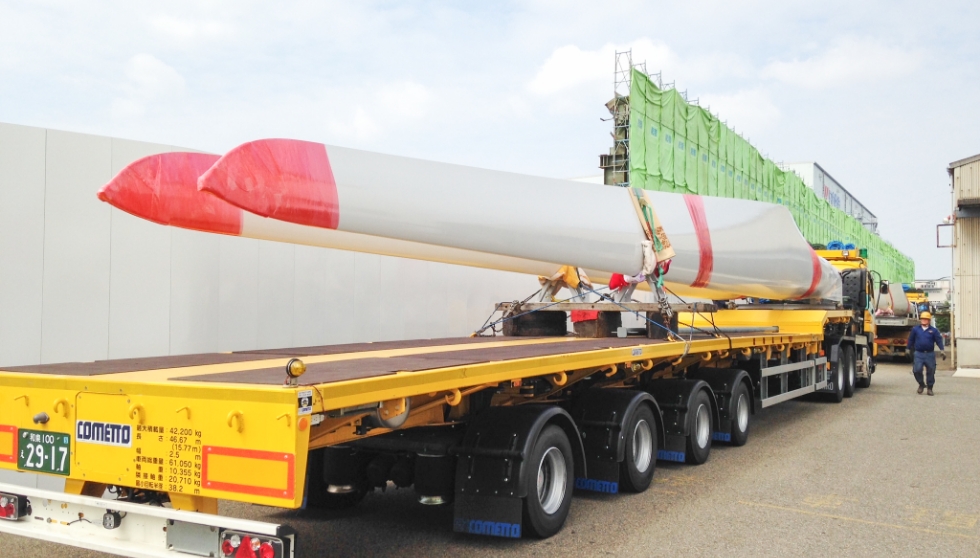
-
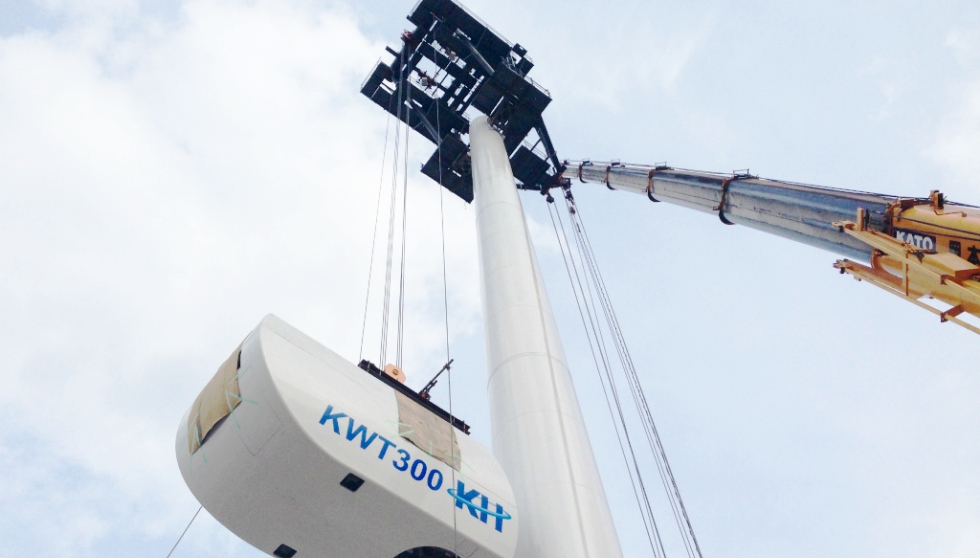
-
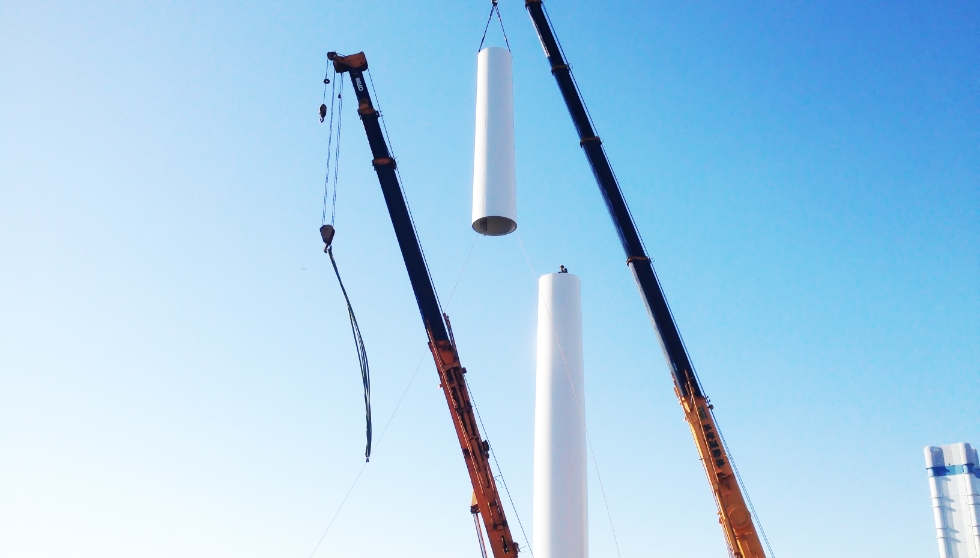
Specifications
| Normal Climate Version | Cold Climate Version/ Extreme Cold Climate Version |
Typhoon Climate Version | |
|---|---|---|---|
| IEC/JIS Wind Turbine Class | ⅡA+ | ⅡA | S |
| Reference wind speed Vref(m/s) | 50 | 42.5 | 58.5 |
| Maximum wind speed Ve50(m/s) | 70 (Vref×1.4) | 59.5 (Vref×1.4) | 91.26 (Vref×1.56) |
| Average wind speed Vave(m/s) | 8.5 | 8.5 | 8.5 |
| Turbulence intensity Iref | 0.18 | 0.16 | 0.18 |
| Operating wind speed range(m/s) | 3~25 | 3~25 (3~22) | 3~25 |
| Operating temperature range(℃) | -15~45 | -30~30 (-35~30) | -15~45 |
| Cut out temperature range(℃) | -20~55 | -40~40 (-50~40) | -20~55 |
| Rotor diameter, Rated rotational speed | 33m、40.1rpm | ||
| Output voltage, Frequency | 440/440V Rated voltage±0.8%, 50Hz/60Hz Rated frequency±5Hz | ||
| Tower height, Number of blocks | 41.5m, 4/5 blocks | ||
| Other features | Corresponds to Wind Turbine Class I adopted to extreme wind speed | Output control in icing conditions (Output suppression in low icing temperatures) |
Active wind direction control in downwind position during typhoons, equipped with emergency generator. |
Nacelle structure

